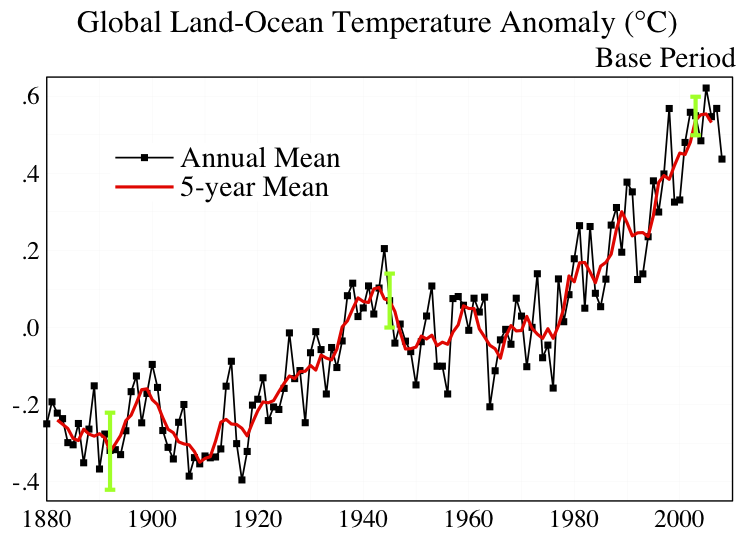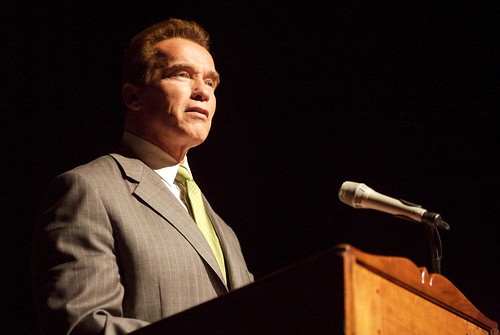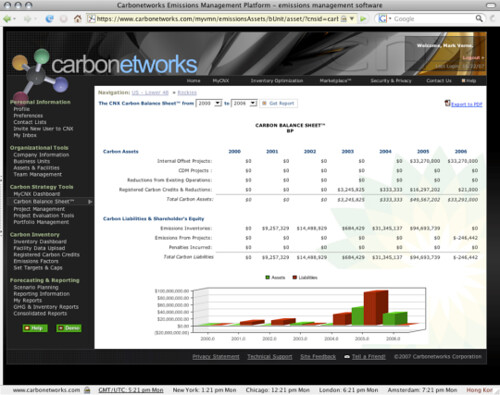
Screenshot credit Tom Raftery – data from NASA
The world is getting warmer. 2008 was the 9th warmest year on record. 2009, barring a sudden, severe, global cold snap, will end up being the 4th or 5th warmest year on record and with El Niño coming on in the Pacific, 2010 looks likely to set a new temperature record for the hottest year in recorded history.
Climate change is real and it is here, now. So what you say, what does that have to do with me? Or more to the point, what does that have to do with my work?
Well, if you are based in the UK, there is a strong chance that next April, it will have a very direct impact on your job, company, or business. This is because the UK has passed legislation called the Carbon Reduction Committment (CRC).
The CRC is a groundbreaking piece of legislation designed to help the UK meet its carbon reduction targets by 2020. Basically, the CRC scheme will apply to organisations that had a half-hourly metered electricity consumption greater than 6,000 MWh per year in 2008. Organisations qualifying for CRC would have all their energy use covered by the scheme, this includes emissions from direct energy use as well as electricity purchased. Initially, it is estimated, around 5,000 organisations will qualify, including supermarkets, water companies, banks, local authorities and all central Government Departments. Qualifying organisations mostly fall below the threshold for the European Union Emissions Trading Scheme, but account for around 10% of the UK carbon emissions.
The organisations involved will need to register or make an information disclosure by 30 September 2010. A financial penalty (£5,000 plus a per diem charge for each subsequent working day an organisation fails to submit a report) will be imposed on organisations who fail to meet the deadline.
The first year of the scheme (April 2010-2011) is called the footprint year. Companies are required to submit an audited report of their emissions during the footprint year by 29 July 2011. Again financial penalties will be imposed for failing to meet the deadline.
In the second year, (2011-2012) participants will have to purchase emissions allowances to cover their forecast emissions for 2011/12. And in 2013 auctioning of carbon allowances begins, with all the income from the auctions recycled back to participants by the means of an annual payment based on participants’ average annual emissions since the start of the scheme.
There will be a bonus or penalty according to the organisation’s position in a CRC league table. The league table will be made public thereby enhancing the transparency of companies carbon reporting and hopefully shaming any egregious emitters into reducing their carbon footprint.
I have gone in to a bit of detail about the CRC here because it is difficult enough to find out information about the scheme and most UK business appear to be wholly unprepared for its implementation. The UK Department of Climate Change (I think it is interesting that the UK has a government department of climate change in the first place – how many other governments do?) has an easy to follow guide to the CRC [PDF] available for download which will help.
The CRC is going to be closely watched by other countries and you can be sure it will be used as a model by many to reduce their carbon emissions.
As I mentioned at the outset of this piece, climate change is here, it is real. Increasingly we are going to see bills like the CRC enacted so we can try to mitigate its effects.




